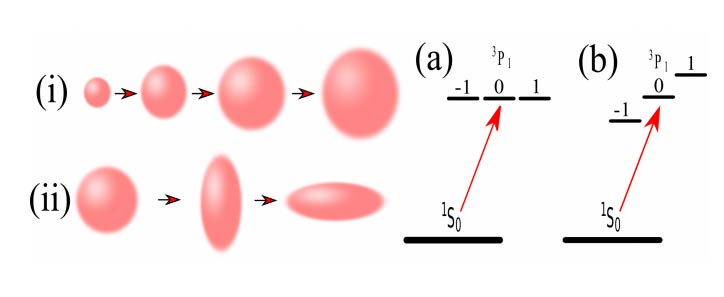Dipole-dipole interaction between atoms

The exaggerated properties of highly excited atoms lend them to manipulation by laboratory strength fields. One example is the large interaction between atoms that results from the enormous electric dipole moments; this interaction can be the driver of interesting many body physics. We are interested in schemes for trapping these atoms and using them in a manner where their interactions are controlled. We will perform calculations for a few atoms up to 10’s of thousands to understand the emergence of collective behavior in this system.
The main focus is to understand the basic properties of this kind of system. For example, the states of the atoms can be manipulated to mimic an exciton hopping through a disordered system but with the hopping amplitude not restricted to the nearest-neighbor sites. One issue to address is how the phenomenon known as Anderson localization is manifest in weakly disordered system when long range hopping is possible. Another example is the behavior of the exciton when the distance between sites is comparable to the wavelength of the light emitted when the exciton recombines. In this case, collective radiative effects become possible; the system can super-radiate where dissipation of the quantum coherence is fast or can sub-radiate and preserve coherence over longer than expected times.
Relevant Publications:
R.T. Sutherland and F. Robicheaux, "Coherent forward broadening in cold atom clouds", Phys. Rev. A 93, 023407 (2016).
H. Yu and F. Robicheaux, "Coherent dipole transport in a small grid of Rydberg atoms", Phys. Rev. A 93, 023618 (2016).
F. Robicheaux, P. Giannakeas, and C.H. Greene, "Schwinger-variational-principle theory of collisions in the presence of multiple potentials", Phys. Rev. A 92, 022711 (2015)
F. Robicheaux and K. Niffenegger, "Quantum simulations of a freely rotating ring of ultracold and identical bosonic ions", Phys. Rev. A 91, 063618 (2015)
F. Robicheaux and N.M. Gill, "Effect of random positions for coherent dipole transport", Phys. Rev. A 89, 053429 (2014)